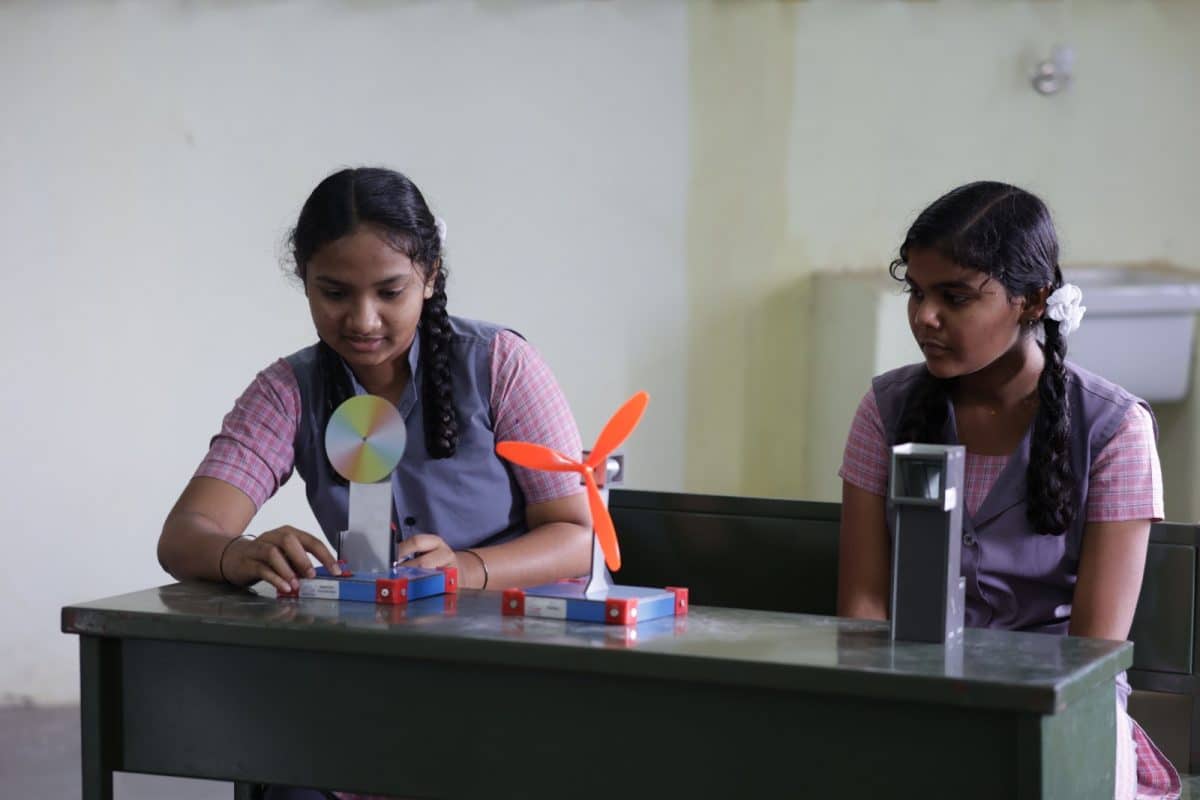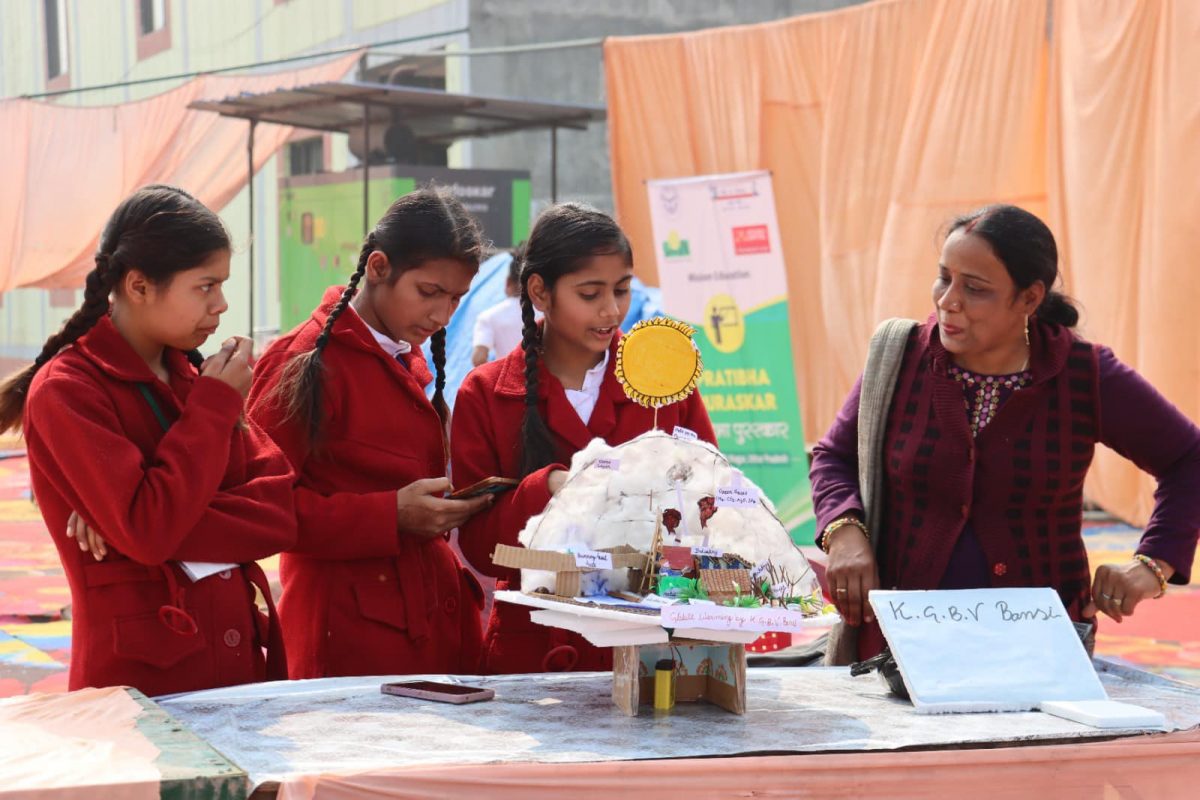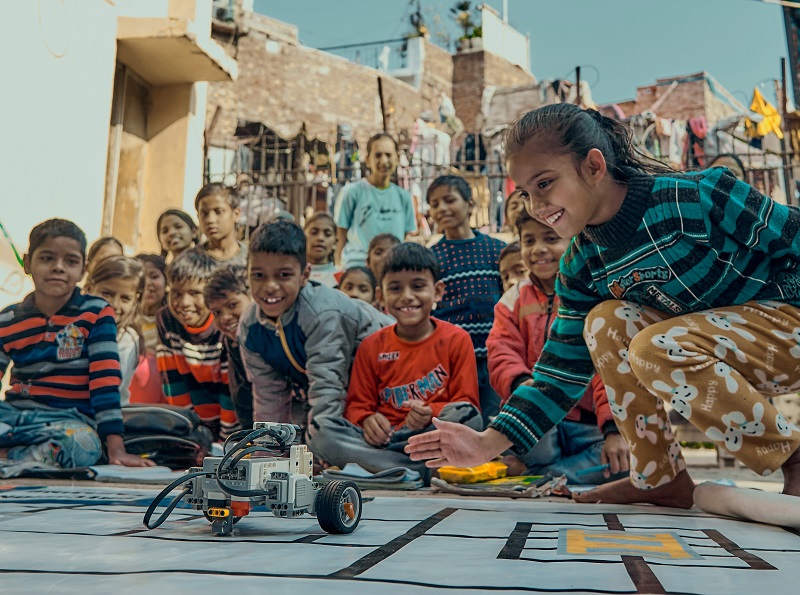Imagine a bustling city in India, full of tech companies and modern skyscrapers. It is a place where ideas flow, and innovation thrives. Now, what if you get to know that some of India’s brightest minds are not found in those buzzing cities, but in its vast rural heartland? It might sound surprising, but it is true. The problem is that many of these kids do not get the same opportunities as their city-dwelling peers.
That is where STEAM education comes in. It is like the key that unlocks all that hidden potential.
But what is STEAM Education?
STEAM education transcends the traditional boundaries of isolated subjects. Instead, it promotes an interdisciplinary approach where students learn critical thinking, problem-solving, creativity, and collaboration.
Let us break down the components of STEAM
Science: The building block of discovery, fueling curiosity and scientific inquiry.
Technology: Mastering tools, software, and processes for innovation and efficiency.
Engineering: Applying scientific principles to design, build, and refine solutions.
Arts: Fostering creativity, communication, self-expression, and understanding cultural contexts.
Mathematics: The language of logic, problem-solving, and quantitative reasoning.
Unlike the traditional education system, STEAM education is not only about acquiring knowledge – it is about empowering learners to apply that knowledge to tackle real-world problems.
Why ‘Rural STEAM Education’ matters for the entire India?
The world is changing at a never before speed. Jobs that did not exist ten years ago are now considered very important.
A recent survey by ASER (rural) found that the enrollment rate in government schools in India has increased from 65.8% in 2020 and 64.3% in 2018 to 70.3% in 2021. Most of the schools in India are rural schools, accounting for 84.71% of the 1.5 million schools in the country.
This suggests that the vast potential for improving education in India lies in rural government schools.
If we want to change the next generation of India, improving and encouraging rural schools is the key, and STEAM/STEM education in India is the way for it.
Bridging the Skill Gap
Rural communities with access to quality STEAM education can nurture a generation equipped to excel in these in-demand fields, bridging the gap between rural and urban capabilities.
India’s expanding economy necessitates a workforce equipped with technical skills, adaptability, and a focus on innovation. STEAM-related fields are experiencing rapid growth, with job opportunities increasing at twice the rate compared to other disciplines. This growth is driven by automation, and artificial intelligence transforming traditional careers, particularly in service industries, manufacturing, and mid-level management.
The demand for STEAM skills, especially in software development, is on the rise. Rural communities provided with quality STEAM education can prepare the next generation to excel in these in-demand fields, bridging the skills gap between rural and urban areas.
Solving Local Challenges
Rural India faces unique issues: sustainable agriculture, water management, healthcare access, and infrastructure. STEAM education empowers students to analyze these problems through a scientific lens, design innovative engineering solutions, and leverage technology to improve their communities.
Nurturing Entrepreneurship
STEAM ignites an entrepreneurial spirit among learners. With its emphasis on design thinking and problem-solving, students can envision and create businesses that uplift their local economies and address local needs.
Unleashing Creativity
The arts component of STEAM adds a crucial dimension. It allows students to express themselves, engage with their cultural heritage, and find new ways to leverage artistic skills to communicate ideas and design human-centered solutions.
Challenges and Opportunities
Implementing STEAM education in rural India isn’t without its challenges. Here are some key obstacles and how to address them:
Limited Infrastructure
Engaging STEAM/STEM programs to rural schools often faces a serious hurdle: limited access to things like computers, labs, and the latest technology. But forming partnerships can open up new possibilities. Governments, nonprofits and private businesses might collaborate with schools to create shared spaces where students can access these vital resources. This kind of cooperation not only gets kids excited about science but eases the financial burden on individual schools.
Technical knowledge in local language
Encouraging academics to publish papers and books in local languages makes the knowledge much more accessible to the teachers and communities who can benefit the most. It ensures that the latest findings are not locked away in inaccessible jargon but actively contribute to bettering the lives of rural students.
Teacher Training
For teachers accustomed to traditional lecture-based methods, shifting to a hands-on, project-based STEAM approach is necessary. Robust professional development programs can enhance teachers’ pedagogical skills and confidence in delivering STEAM/STEM education curriculum.
Government efforts
India’s commitment to STEAM education is evident in the government’s significant 2019 investment of $10 billion over the following five years. This investment directly fuels a projected surge in STEM graduates, with numbers expected to reach 10 million by 2025. The demand for STEM skills follows a parallel trajectory, anticipating a sharp 50% increase as early as 2025.
Initiatives like Skill India and the Atal Innovation Mission play a central role in nurturing STEM/STEAM skills among India’s youth. The Atal Tinkering Lab initiative, in particular, fosters a potent blend of creativity, innovation, and entrepreneurial spirit. This focus highlights the understanding that innovation, powered by digital literacy, is a cornerstone of India’s ongoing progress and development.
The STEAM work of Smile Foundation
Smile Foundation’s Mission Education initiative integrates STEAM (Science, Technology, Engineering, Arts, and Mathematics) education to empower underserved children with the skills and knowledge needed for a brighter future. Through innovative teaching methodologies, hands-on activities, and interactive workshops, children are encouraged to explore the world of STEAM, fostering creativity, critical thinking, and problem-solving abilities.
By bridging the gap between theoretical knowledge and practical application, Mission Education cultivates a lifelong passion for learning and equips children with the tools to excel in an increasingly technology-driven world. Through STEAM education, Smile Foundation aims to nurture the next generation of innovators, inventors, and leaders, creating opportunities for socio-economic empowerment and sustainable development in communities across India.





